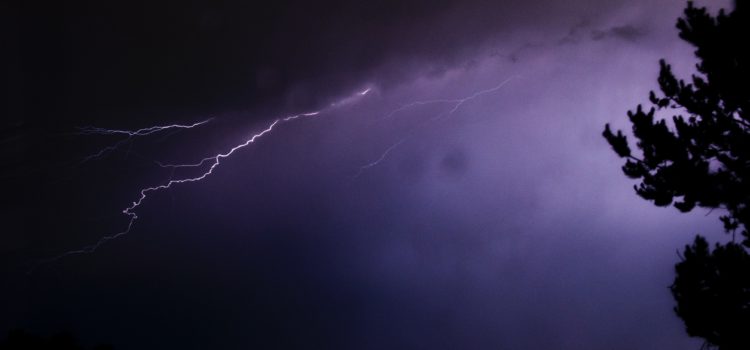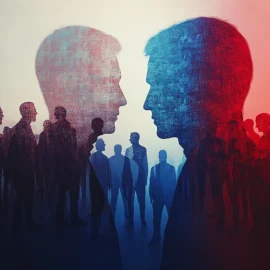

This article is an excerpt from the Shortform summary of "Unbroken" by Laura Hillenbrand. Shortform has the world's best summaries of books you should be reading.
Like this article? Sign up for a free trial here .
What was Execution Island? Where was it, and what does it have to do with Unbroken?
Execution Island, officially called Kwajalein, is an island that was under Japanese control during World War II. Execution Island became notorious for being a place where captured forces were taken and killed, despite wartime laws. In Unbroken, Louis Zamperini spends 42 days on Execution Island.
Execution Island: Is Louis Doomed?
On the journey to Kwajalein, the Japanese soldiers were convivial with the Americans. They were fed well and given separate quarters to sleep in. But as the freighter pulled within sight of the island, everything changed.
On July 16, they were blindfolded, fireman-carried off the freighter, and thrown in cells with just enough room for one man. Louie’s cell was infested with bugs, and only a small square window in the door ventilated the room. The air was heavy, hot, and rank from the latrine in the floor.
On one of the walls, Louie found an engraving—“Nine marines marooned on Makin Island, August 18, 1942,” the names of the men etched beneath it. Louie had heard of these marines before, as most American soldiers had. They’d been accidentally left behind after an attack and vanished. Louie was likely the first person to learn their whereabouts.
The fact that these men were nowhere in sight was ominous. Louie called out to Phil and heard a meek response from far away. They had realized that they were on Execution Island, had just enough time to check on each other’s well-being before a guard came in. Louie took in his surroundings, his emaciated body, and his circumstances and started to weep. He covered his mouth to muffle his sobs.
Wishing for Death
Louie and Phil would stay on Execution Island for 42 days. The ordeal they experienced was worse than what they’d survived on the raft, and Louie found himself wishing for death on several occasions.
Each day, Louie was given a golf ball-sized dry biscuit and a swallow of hot brown water. The biscuit was thrown through the window and shattered on the ground, leaving Louie to scramble for crumbs like a rodent. Louie soon learned that the marines had been executed, and from that day on, he waited to be pulled from his cell and beheaded.
The guards at Kwajalein seemed to find pleasure in outdoing each other with cruelty. When Louie begged for water, they threw scalding water in his face. He was poked with long sticks through the window and made to dance while they threw stones at him. Almost daily, one of the guards sliced his hand across his throat while laughing.
On at least two occasions, a submarine docked near the island, and more than 80 men came ashore and took turns abusing Louie and Phil. They threw stones and sharp sticks at the crouching men and spit on them. Phil and Louie couldn’t communicate, but they made scuffing sounds on the floor to signal that they were still alive. Under these conditions, Louie was starting to feel a loss of dignity and, with it, a diminishing will to live.
Both Louie and Phil were pulled from their cells on several occasions. Believing they were headed for execution each time, they were surprised to be taken to an interrogation room. The men were questioned about the logistics of American bombers and base sites in Hawaii. Louie told as much of the truth as he could except when it came to the bases. He pointed out the fake base sites built on Hawaii to fool Japanese bombers.
On four other occasions, Louie and Phil were taken to the infirmary, where medical experiments were performed on them. They were injected with solutions that left them dizzy, wracked with pain, and covered in rashes. That both Phil and Louie survived these experiments was lucky. Thousands of other POWs who’d undergone similar experiments died.
Finally, Louie and Phil were slated for transfer to an official POW camp in Japan. Louie was hopeful, for prisoners were supposed to receive supplies from the Red Cross at these camps and be able to make contact with their families. Also, the transfer meant they wouldn’t be executed, which had seemed likely once their usefulness to the interrogators and doctors was done. The reason they were spared execution would be a mystery for a long time.
Execution island was undoubtedly a brutal place. But Louis Zamperini’s story didn’t end on Execution Island. He was transferred to two more POW camps, and survived until the end of the war.

———End of Preview———
Like what you just read? Read the rest of the world's best summary of Laura Hillenbrand's "Unbroken" at Shortform .
Here's what you'll find in our full Unbroken summary :
- How Louie Zamperini was on track to become an Olympic athlete until the war started
- The unbelievable story of his capture as a prisoner of war
- The ultimate fate of Louie and his captors






